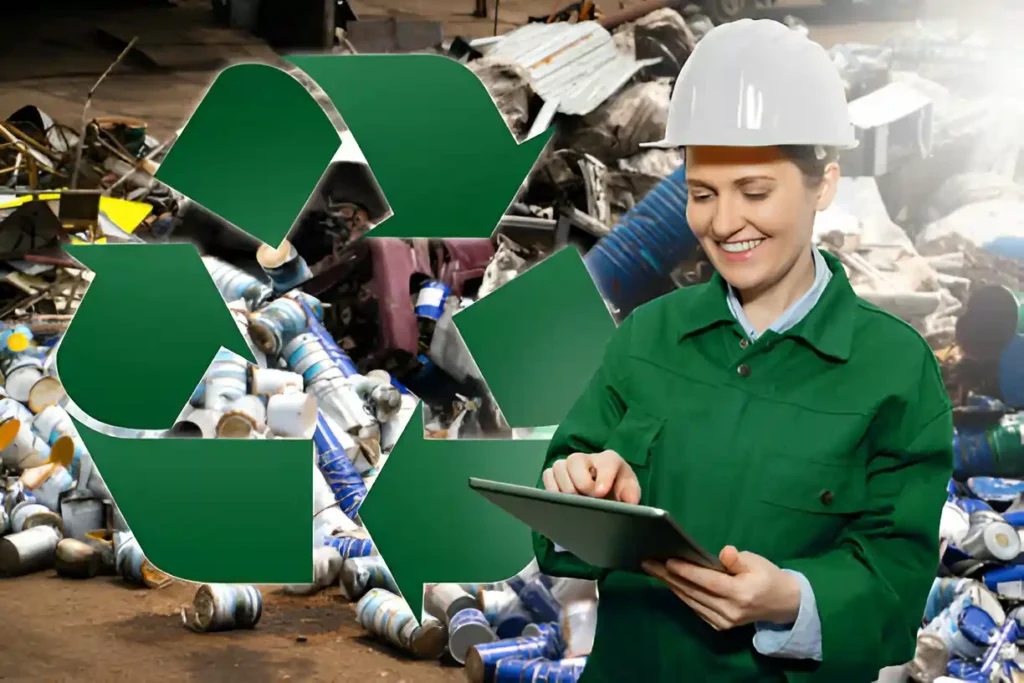Key Takeaways
- Scrap metal recycling significantly reduces environmental impact by conserving energy and natural resources.
- Implementing best practices in scrap metal recycling can enhance efficiency and cost-effectiveness.
- Proper disposal and sorting techniques can prevent contamination and improve recycling rates.
Understanding Scrap Metal Recycling
The process of reclaiming and processing spent metal materials to make new goods is known as scrap metal recycling. This method significantly lowers the energy needed to produce metal while also conserving natural resources. Many metals, such as copper, brass, aluminum, steel, and zinc, may be recycled again and again without losing their basic characteristics, which makes them extremely sustainable. Companies involved in commercial metal recycling Passaic County NJ play a significant role in advancing these environmental efforts.
By providing essential services, businesses in metal recycling help alleviate the need to mine new metals, further reducing environmental degradation. The lifecycle of metal products can be extended indefinitely through recycling, making this practice both sustainable and economically beneficial. Moreover, recycling scrap metal helps divert waste from landfills, promoting more environmentally friendly waste management practices.
Environmental Benefits
One of the most significant environmental benefits of scrap metal recycling is the conservation of natural resources. We can lessen the need for potentially extremely damaging extraction and processing of raw materials from the ground by recycling metals. This helps preserve ecosystems and biodiversity, preventing habitat loss and soil degradation. Additionally, it reduces the consumption of energy and water resources often required for new metal production, contributing to a better ecological balance.
Moreover, recycling scrap metal helps in reducing greenhouse gas emissions. When metal is recycled instead than made from raw ore, a substantial amount of energy is saved. Recycling aluminum, for instance, can save up to 95% of the energy needed to produce the same quantity of aluminum using virgin resources. The environment gains from this decrease in energy use since it lowers carbon dioxide emissions. In fact, the more we engage in metal recycling, the closer we get to mitigating the effects of climate change.
Economic Advantages
Recycling scrap metal is also economically advantageous. It provides job opportunities and stimulates the economy. For instance, the scrap metal recycling industry has created numerous jobs around the globe and generated substantial revenue. In the United States alone, the industry is worth billions of dollars annually and supports thousands of jobs, from collection and sorting to processing and distribution. Furthermore, it has the potential to contribute significantly to local economies by providing gainful employment.
Additionally, it enables businesses to save money by reducing the costs associated with raw material acquisition and waste disposal. Companies that recycle metals can often procure materials at a lower cost than purchasing newly mined materials. They also often benefit from lower waste disposal fees, as recycling diverts significant amounts of metal waste from landfills. These savings can enhance business profitability and encourage more industries to adopt recycling practices.
Best Practices in Scrap Metal Recycling
- Proper Sorting
Sorting scrap metal correctly is crucial for efficient recycling. Different types of metals should be separated to prevent contamination. For instance, non-ferrous metals like copper and aluminum should be separated from ferrous metals like iron and steel. Accurate sorting can improve the quality of the recycled material and enhance the efficiency of the recycling process. This practice begins at the collection stage, where mixed metals are often gathered together, and meticulous work is required to separate them accurately.
- Clean and Prepare Metals
Before recycling, it is essential to clean and prepare scrap metal. Remove any non-metal materials, such as plastic or wood, as these can contaminate the recycling process. Ensure that the metals are dry and free of hazardous substances. This step helps reduce processing time and costs. Cleaning and preparing metals can also involve deconstructing composite materials and removing any coatings or adhesives. Proper preparation ensures that the quality of the recycled material remains high and that the recycling process is as efficient as possible.
- Utilize Advanced Technologies
Advanced technologies can significantly improve the recycling process. For instance, using magnetic separators can help in the efficient sorting of ferrous and non-ferrous metals. Implementing automated systems can streamline operations and increase productivity. Technologies such as shredders and granulators can break down large pieces of scrap metal into smaller, more manageable sizes, making further processing easier. Innovations in robotics and AI are also playing a role in optimizing sorting processes and enhancing the overall efficiency of metal recycling operations.
Examples of Effective Scrap Metal Recycling
Several organizations have successfully implemented scrap metal recycling practices. For example, numerous municipalities have introduced comprehensive recycling programs that include the collection and processing of scrap metals. These programs not only help reduce waste but also promote community involvement in recycling efforts. Municipal recycling programs often provide residents with designated recycling bins and regular pickup services, making it easier for communities to participate in scrap metal recycling.
Another example is the automotive industry, where manufacturers are increasingly using recycled metal in the production of new vehicles. This practice not only minimizes environmental impact but also reduces manufacturing costs. Automakers like Tesla are leading the way in using recycled materials to manufacture parts, showcasing the viability and benefits of recycled metals in high-quality production. This trend is likely to continue as more industries recognize the environmental and economic advantages of using recycled materials.
Conclusion
Scrap metal recycling is a crucial practice for environmental conservation and economic sustainability. By adopting best practices such as proper sorting, cleaning, and utilizing advanced technologies, we can enhance the effectiveness of recycling efforts. It is vital for individuals and businesses to participate in scrap metal recycling to contribute to a greener future. Engaging in recycling not only helps preserve natural resources and reduce pollution but also provides economic benefits and supports sustainable development. Recycling is a vital activity for our modern society since it may have a significant positive impact on both the environment and the economy when done collectively.
